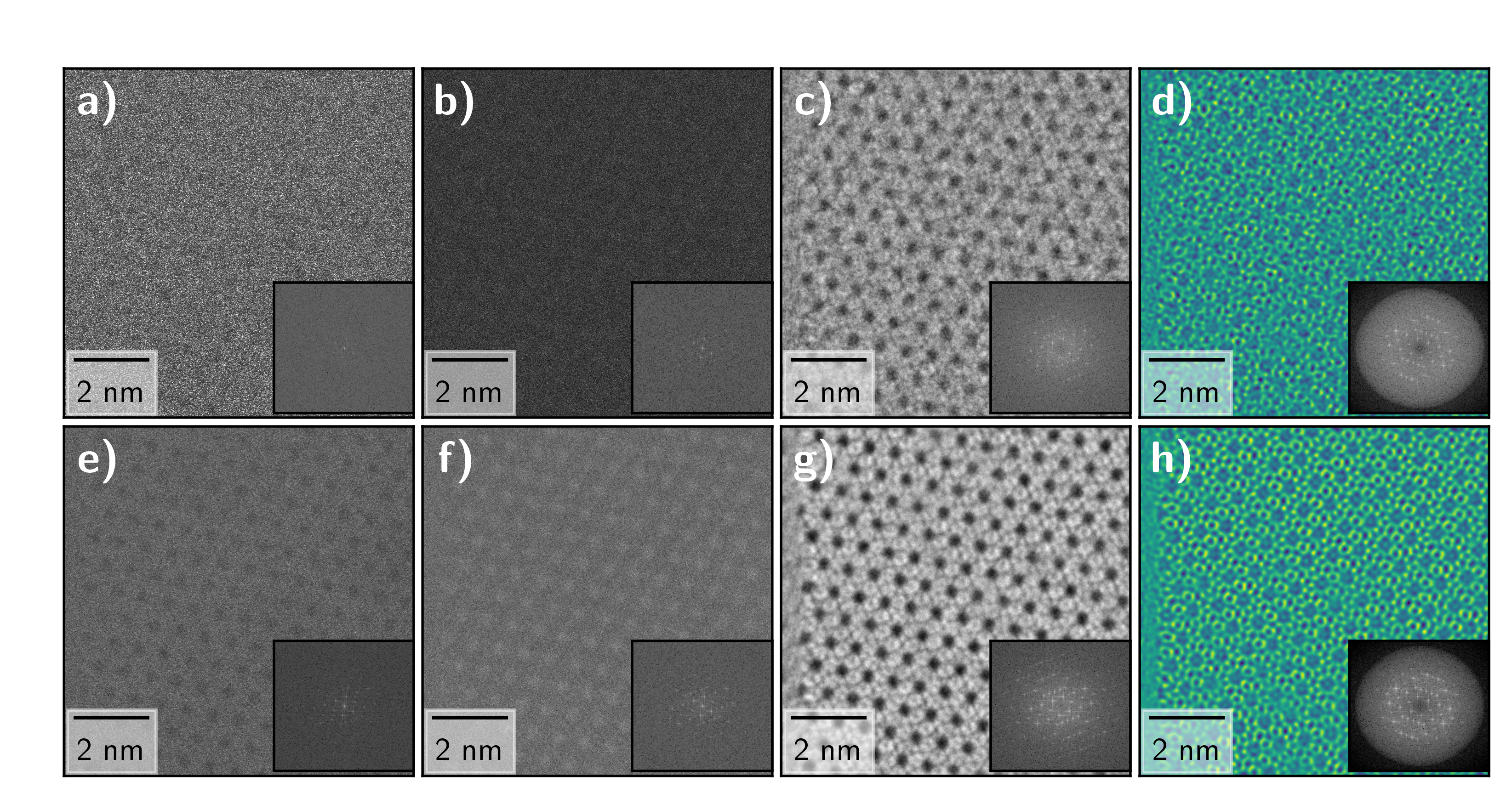Cameras
Pixilated detectors, otherwise known as cameras, are essential to 4D STEM.
As the camera must record data from each probe position, the time resolution of a camera used for 4D STEM is often the limiting factor in the scan speed.
A fast STEM scan dwells for at most a few microseconds at each probe position. Most cameras collect data frame by frame, and their speed is described in frames per second. For a microsecond dwell time, we would need a camera operating at a million frames per second. Most cameras for 4D STEM currently provide a few thousand frames per second.
However event driven cameras such as the Timepix3 are able to provide a far higher time resolution. We have recently demonstrated the use of a Timepix3 camera for 4D STEM. Microsecond dwell times are now easy, and we can scan significantly faster still.
 Single microsecond dwell time 4D STEM data of a silicalite-1 zeolite from a single 1k by 1k probe position scan (top) and aligned and drift corrected from 10 scans (bottom). The dose was 300 electrons per square Å per scan.
Single microsecond dwell time 4D STEM data of a silicalite-1 zeolite from a single 1k by 1k probe position scan (top) and aligned and drift corrected from 10 scans (bottom). The dose was 300 electrons per square Å per scan.
For further details
“Event driven 4D STEM acquisition with a Timepix3 detector: microsecond dwell time and faster scans for high precision and low dose applications”, Daen Jannis, Christoph Hofer, Chuang Gao, Xiaobin Xie, Armand Béché, Timothy J Pennycook, Jo Verbeeck, Ultramicroscopy 233, (2022), p. 113423.